
Up to 1000 audio channels
Multiple audio formats
Up to 96 monotorized faders
Reliability and redundancy
Digital Audio Console for Radio and Television
ATRIUM is a digital audio mixer specially designed for radio and television audio production and broadcasting in the most demanding working environments. It handles up to 1000 channels of local or IP audio controllable through one or several surfaces, each with up to 90 motorized and page-able faders.
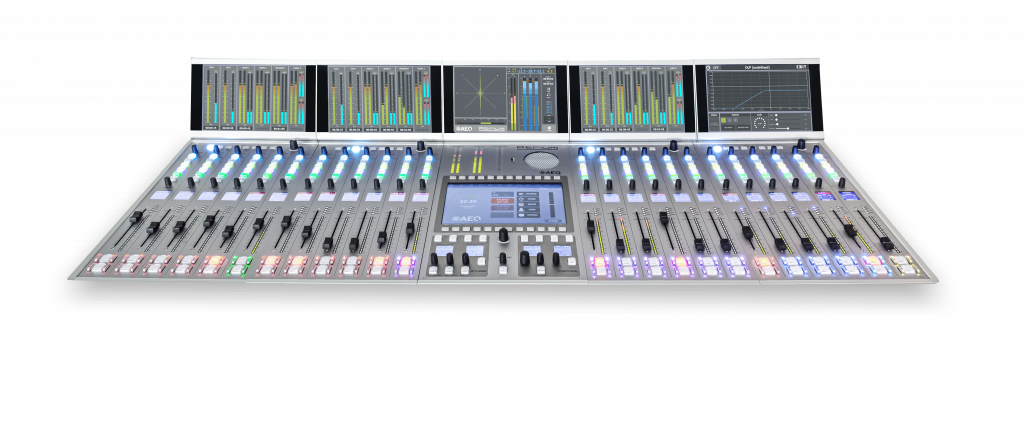
Functional Description
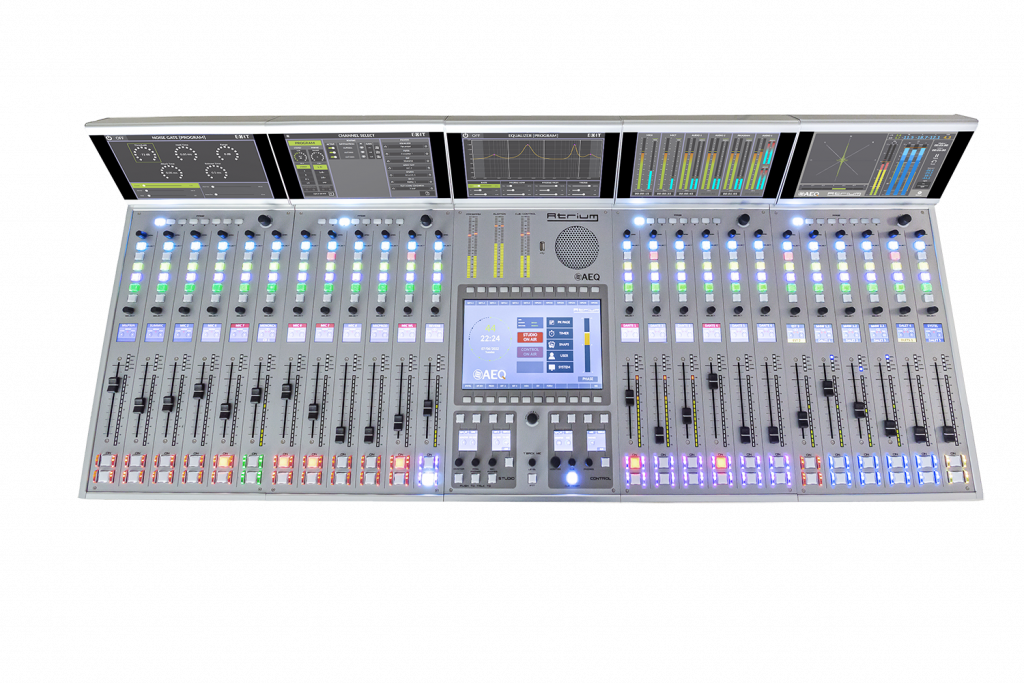
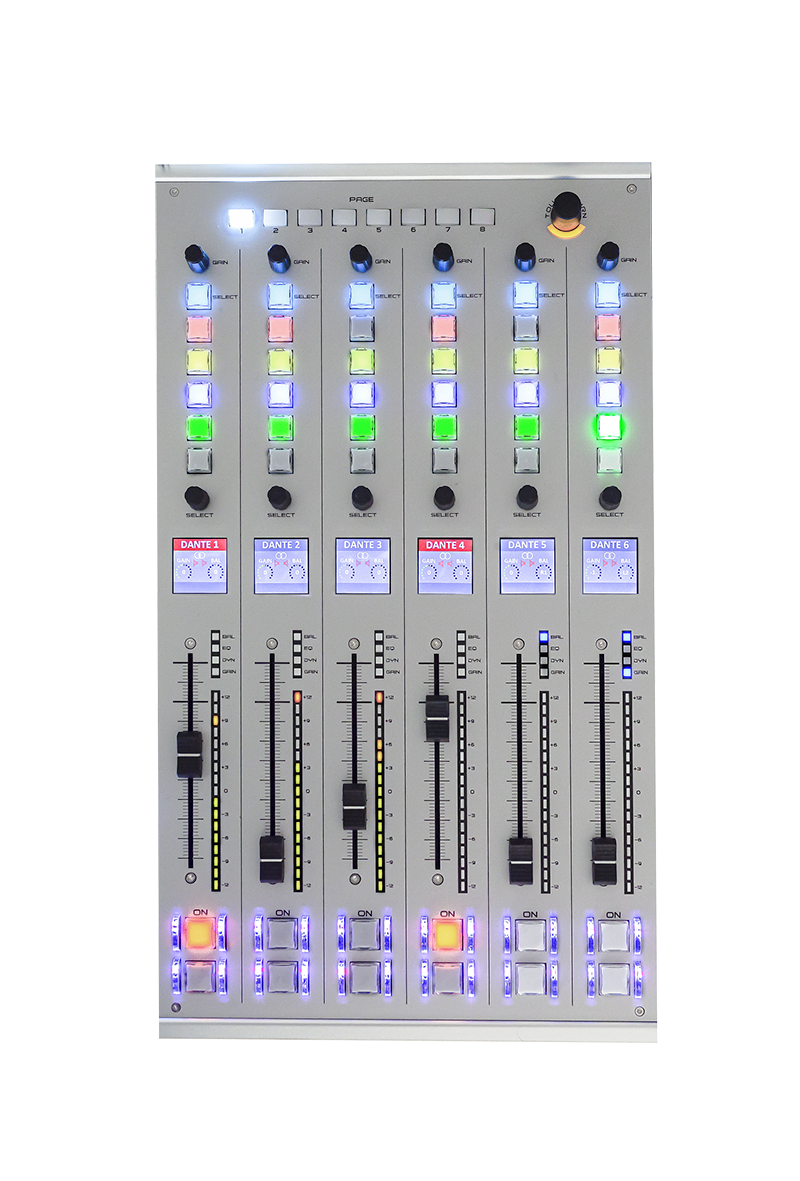
Motorized faders
Programmable keys with 7-color signaling and two levels of brightness
ON key is pre-assigned to the channel selection and main routing activation functions
Contextual information screens to the channel
Pre-assigned encoder to handle signal gain control
SELECT channel selection key
Vumeter with a range of -12 dB to +12 dB
Indicator of: unbalanced signal, active equalization, active dynamics process and modified nominal gain
1.54″ TFT color display shows the name of the signal assigned to the channel, gain level, signal roll-off, mode and phase settings, and ONAIR status, among other functions
SELECT encoder for selection of the source to be controlled by the channel and signal balancing
PAGE programmable key: Page change: Up to 8 fader pages
Displays for fader modules
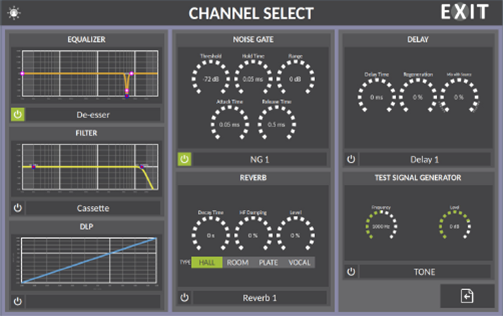

















Change phase, mode, routing, sensitivity, phantom activation, or processes with a single click. Direct access to AUTOMIX and AUTOGAIN, the long name assigned to the active channel, routing and the name of active processes, among others. The process screens are touch screens but for more precision the TOUCH & TURN encoder is available. EQ, filter and compression processes can be edited on the graphic itself, or with the virtual faders below the graphic. All these functions are executed on demand on the screen of the control module.
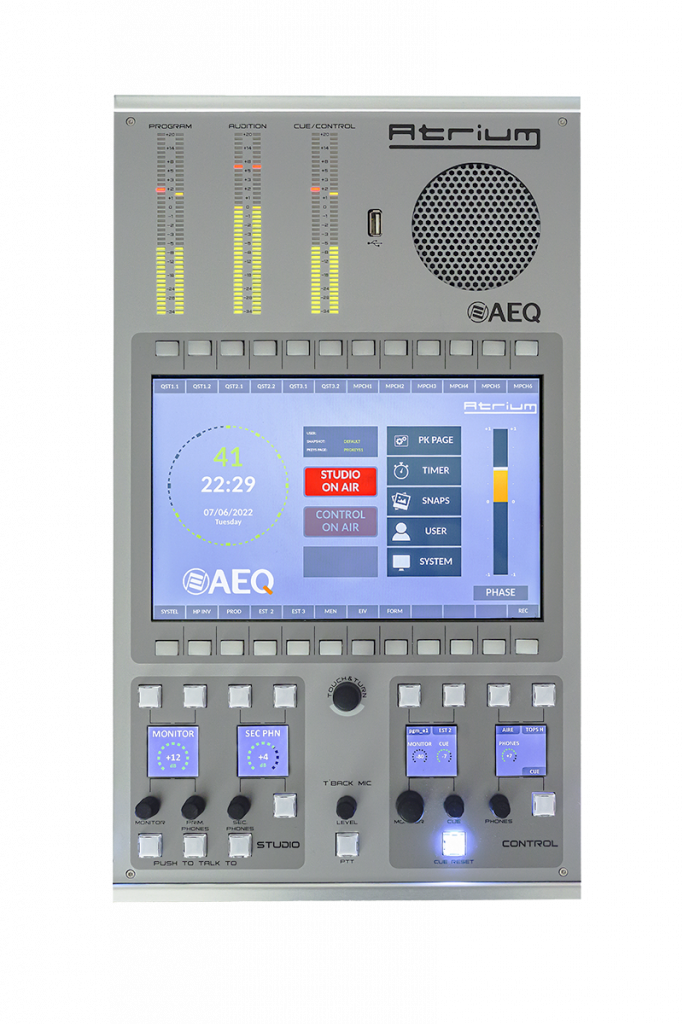
XLR microphone input. Headphones output in ¼” stereo jack. Pre-listening loudspeaker. USB interface
3 pre-assigned precision stereo vumeters for PROGRAM, AUDITION and CUE with ranges from -34 dB to +20 dB above nominal configurable level
24 programmable keys in 16 different pages or layers (up to 384 programmable keys), with 7 color signaling and two levels of brightness
Software with intuitive menus and different access levels depending on the user’s credentials
Study and control zones with 5 keys each for sending and monitoring. They can be activated exclusively or summed
Level control of control and studio monitors, as well as control and studio headphones
4 specific talkback keys for coordination
Self-monitoring and talkback microphone level control, as well as CUE speaker. CUE RESET button
TOUCH&TURN encoder for more precise on-screen adjustments
Optional display associated with the control module

An optional module with a TFT display associated with the control module module makes it possible to incorporate the measurements required in the most harshest working environments: • Phase measurement in spatial format. • Loudness measurement according to EBU R128.
Allows the selection of the signal to be measured.
Receives the signal to be measured through a Dante link.
X_CORE Audio Engine
It is an audio engine, mixer, processor and distributor for broadcast. It acts as the heart of a single or set of ATRIUM consoles. It can also work as a general purpose audio matrix, as an intercom matrix, or with combined functionalities.
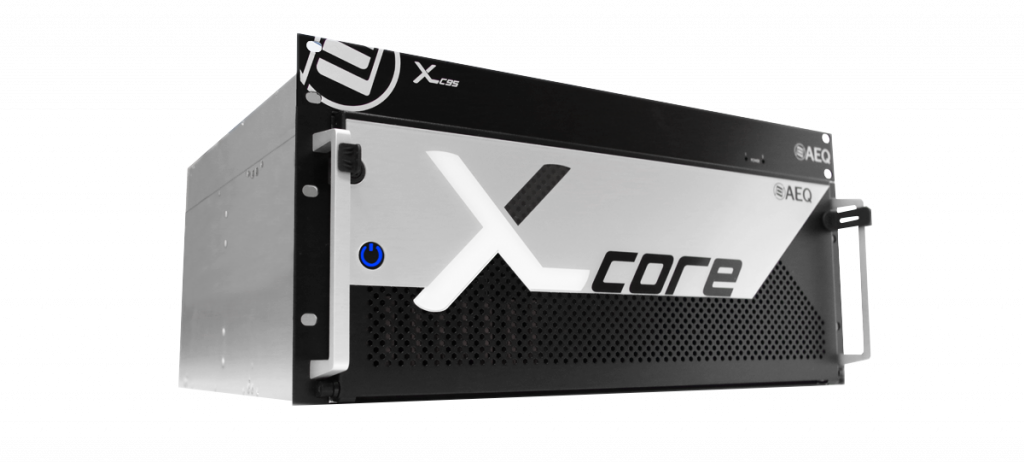

Each matrix, X_CORE for Atrium, depending on configuration, can handle up to 1,024 audio inputs and outputs.
It is fully modular and redundant: redundancy options in controller, DSP cards and power supply.
Its inputs and outputs are through cards: AES/EBU, analog line, microphone and headphones, MADI and proprietary links of more than 1000 channels, among others.
Using AoIP Dante/AES67 cards with 64 inputs and outputs, we can include IP audio inputs and outputs from other consoles or specific interfaces.
It can include IP audio inputs and outputs from equipment with RAVENNA, SMPTE ST 2110-30 and SMPTE ST 2110-31 protocols.
By means of dual SDI cards, we can include in the matrix, inputs and outputs to extract and reintroduce SDI embedded audio.
Configuration Software

ATRIUM Setup – Configuration Software
It’s an application that includes a wizard for quick configuration of a console by simply indicating the number and type of inputs and outputs required. The whole system is fully configurable and allows you to specify, among other things, the number and type of mixer buses, input channels, type of processing applicable to each channel of the console, output routing, etc…
Remote Control Software
ATRIUM Virtual – Remote Control Software
The full functionality of the physical control surface is available through this software application. Easy operation of switches, rotary encoders, displays and faders.
Technical Details
– Modular design in surfaces and audio engine.
– Multisurface: up to 6 consoles or control surfaces per audio engine.
– Internal sampling frequency 48 KHz at 24 bits. Internal 32-bit bus.
– Control communication through redundant Gb Ethernet connection under TCP/IP protocol.
– Time synchronization through NTP protocol. Introduction of synchronism by WORDCLOCK or AES 11. It can also receive synchronism through AES10 MADI, AEQ Multichannel, DANTE (PTPv1-2002) and (PTPv2-2008. IEEE 1588) links, and RAVENNA (PTPv2-2008. IEEE 1588) links.
– Modular design to allow adjusting the number of inputs and outputs of the equipment to the needs of each installation. Hot-swappable modules without affecting the functionality of the non-removable part of the equipment.
– Redundancy:
◦ Automatic switching in case of failure or removal of DSP cards and controllers.
◦ Redundant power supply in each surface module and in the audio engine.
◦ Redundant IP audio connections.
◦ Remote control application can work in parallel with the surface.
– Selectable autostart with latest settings or default settings.
– Radio frequency protection.
Surface
– Channels with 6 motorized 100 mm conductive plastic faders with capacitive sensor.
– Audio gain adjustment of all signals, including hidden signals. Selectable balance/panorama control for all channels. Selective phase inversion.
– Additional microphone input for talkback and self-monitoring and headphone output integrated in each control module. Dante IP connectivity to the audio engine.
– CUE output with built-in speaker on the control surface.
– USB input on the control surface.
– 3 precision physical stereo VU meters, one +/- 12 dB presence VU meter per channel.
– Physical control headphone output on the control and monitoring module.
– Independent control on each control surface for control and studio monitors and control, primary and secondary studio headphone outputs.
– Test tone generators: adjustable frequency and level tones, pink and white noise.
– Different user levels with associated passwords up to 31 levels. Default, administrator, operator and basic.
– Cough cut, ON-AIR signaling for studio and control, fader-start, remote PFL, talkback, automatic monitor cut. Configurable monitoring for all system signals.
– Direct routing with keys on each channel.
– Signals assignable to any control channel.
– Flexible logical grouping of signals: mono, stereo and multichannel signals.
– Flexible configuration of virtually unlimited internal MPX buses.
– Up to 128 VU meters transmitted over IP and viewable on console screens as well as on remote PCs via an application.
– Linear phasimeter.
– Optional module with spatial phasimeter and EBU R128 loudness measurement.
– Externally synchronizable clock, timer and stopwatch.
– Control of external equipment (hybrids and AEQ audiocodecs) integrated in the softkey section.
– IP output of the level measurement of the sources selected for Visual Radio.
– Non-volatile RAM memory storage of all signal settings: up to 128 memory locations available.
– Processing of system audio signals. Processing capacity depends on the number of processing cards installed. All audio processes come predefined but always allow manual adjustment in real time and storage in non-volatile system memories.
– Process types implemented:
-Parametric 4-band equalizer.
-High pass, low pass, band pass filter.
-Compressor, limiter, expander, noise gate, DLP mixed dynamics processor, multiband compressor.
-Delay.
-Reverb.
-Combined processing with De-Esser function.
– AUTOMIX and AUTOGAIN, on any of the signals.
– One or several control modules: 261mm wide x 431mm long x 83mm deep.
– Up to 16 modules of 6 faders: 261mm wide x 431mm long x 83mm deep.
– Additional display modules for fader module or control module: 261mm wide x 126mm long x 150mm high.
– The surface is powered by optional redundant PoE+.
Audio Engine
– Maximum capacity for Atrium: 1024 inputs and 1024 outputs.
– Electronically balanced microphone and line inputs. Analog headphone outputs.
– Electronically balanced analog line inputs and outputs. Transformer balanced analog line inputs and outputs option available.
– Digital inputs/outputs configurable as: AES/EBU (AES3) and SPDIF, mono and stereo.
– Groupable digital inputs/outputs according to AES10 (MADI), mono and stereo, one or two 64-channel, 48 kHz, single-mode or multimode fiber interfaces with SFP receptacles and removable cartridges.
– IP audio inputs/outputs, compressed G722 for intercom, 12 channels per card.
– IP audio inputs/outputs, Dante protocol, AES67 and SMPTE ST 2110-30 compatible, 64 channels per card, 48 kHz.
– Audio inputs/outputs over IP, RAVENNA protocol, AES67, SMPTE ST 2110-30 and SMPTE ST 2110-31 compatible. NMOS control. 128 channels per card, 48 kHz.
– SDI digital video embedded audio inputs/outputs up to 3G according to SMPTE 259 M, 292 M and 424 M standards. Cards with two input and 2 output interfaces with 2×16 audio inputs and 2×16 audio outputs.
– GPI and GPO (General Purpose Inputs and Outputs for special applications):
– By optocoupler on some input and output cards.
– GPI by optocoupler and GPO by relay on the controller cards.
– One or several 4ux19″ frames according to configuration.
– Double TDM bus.
– 21 slots for I/O cards that are installed according to the technical requirements of each moment.
– 2 slots for redundant controller card with real-time QNX operating system.
– 20 slots for processor cards.
– Redundant external power supply.


